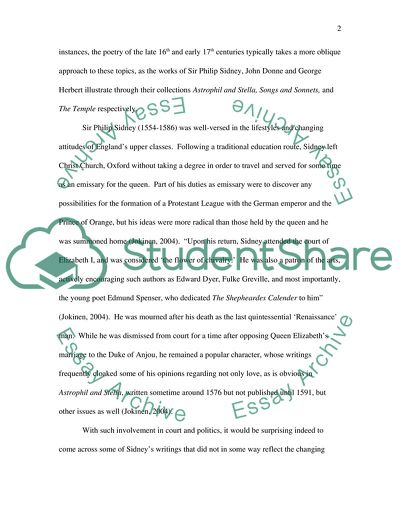Cite this document
(Late 16th & Early 17th Century English Poetry Assignment, n.d.)
Late 16th & Early 17th Century English Poetry Assignment. https://studentshare.org/literature/1705842-english-literature-late-16th-early-17th-century-english-poetry
Late 16th & Early 17th Century English Poetry Assignment. https://studentshare.org/literature/1705842-english-literature-late-16th-early-17th-century-english-poetry
(Late 16th & Early 17th Century English Poetry Assignment)
Late 16th & Early 17th Century English Poetry Assignment. https://studentshare.org/literature/1705842-english-literature-late-16th-early-17th-century-english-poetry.
Late 16th & Early 17th Century English Poetry Assignment. https://studentshare.org/literature/1705842-english-literature-late-16th-early-17th-century-english-poetry.
“Late 16th & Early 17th Century English Poetry Assignment”. https://studentshare.org/literature/1705842-english-literature-late-16th-early-17th-century-english-poetry.


